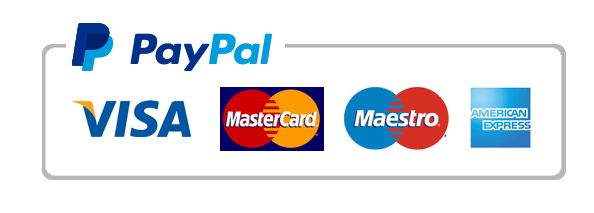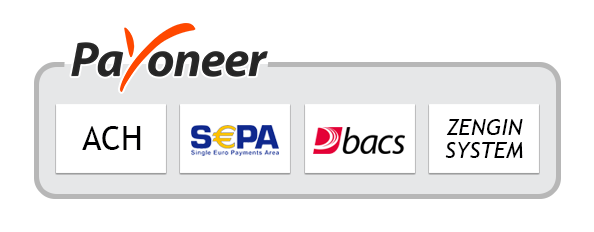Table of Contents
Overview
New York, NY – February 26, 2025 – The global market for 5-Aminolevulinic Acid Hydrochloride (5-ALA HCl) is projected to grow from USD 108.1 million in 2024 to USD 235.5 million by 2034, at a CAGR of 8.1%.
This growth is driven by 5-ALA’s applications in diverse sectors, including agriculture, medical treatments, and cancer diagnosis. In agriculture, it enhances crop yields by promoting photosynthesis, while in medicine, it’s used in photodynamic therapy (PDT) to diagnose and treat skin cancers.
The purity level of 98% is notably dominant, securing a 67.5% market share due to its efficacy in medical applications. Oral delivery also leads the market due to its convenience. Diagnostic laboratories, holding a 74.3% market share, rely on 5-ALA for effective cancer detection. Although offline sales dominate due to healthcare professionals’ preference for direct purchasing, there’s significant regional growth in Asia-Pacific and Europe, which focus on sustainability and advanced diagnostics.

Key Takeaways
- The global 5-Aminolevulinic Acid Hydrochloride market is projected to reach USD 235.5 Mn by 2034, growing at 8.1% CAGR from USD 108.1 Mn in 2024.
- Purity 98% maintains market leadership with a 67.5% share in 2024 due to high efficacy in treatments.
- The oral delivery method leads with a 68.4% market share for ease and patient preference.
- Cancer Diagnosis claims 47.4% share, driven by PDD applications.
- Diagnostic Laboratories hold a 74.3% market share for effective cancer detection.
- Offline Sales dominate with a 67.3% market share due to a preference for in-person transactions.
- Asia-Pacific captures 42.2% of the market, with a notable presence in Europe.
➤ For a deeper understanding, click on the sample report link: https://market.us/report/global-5-aminolevulinic-acid-hydrochloride-market/request-sample/
Report Scope
| Market Value (2024) | USD 108.1 Million |
| Forecast Revenue (2034) | USD 235.5 Million |
| CAGR (2025-2034) | 8.1% |
| Segments Covered | By Purity (Purity 98%, Purity 95%, Others), By Delivery Type (Delivery By Mouth, Delivery By Skin, Others), By Application (Cancer Diagnosis, Cancer treatment With PDT (photodynamic therapy), Fluorescence Guided Surgery, Others), By End User (Diagnostic Laboratories, Pathology Labs, Life Sciences and Research Lab, Others), By Distribution (Online Sales, Offline Sales) |
| Competitive Landscape | SBI Pharmaceuticals Co., Ltd, Chiracon GmbH, Biofrontera AG, Dusa Pharmaceuticals, Inc., Zhengzhou Xinlian Chemical, Shaanxi Yongyuan Bio-Tech Co., Ltd., An Yi Biotech, Nanjing Chemlin, NMT, Yian Biotech |
Experts Review
- Government Incentives and Technological Innovations: Governments globally are encouraging sustainable agricultural practices, presenting opportunities for 5-ALA’s adoption. Technological advancements like precision agriculture also enhance its market appeal due to its role in improving crop resilience.
- Investment Opportunities & Risks: With increasing demand, there’s potential for lucrative returns. However, high production costs pose a risk, especially in price-sensitive markets and among smallholder farmers.
- Consumer Awareness: Growing consumer preference for sustainable and health-oriented solutions, particularly in agriculture, supports market growth.
- Technological Impact: Innovations in drug delivery and diagnostic imaging, leveraging 5-ALA in photodynamic therapies, are pivotal to its expanded medical usage.
- Regulatory Environment: Stringent regulations in pharmaceuticals underscore the need for high purity and quality standards in 5-ALA products, influencing market dynamics and investment strategies.
➤ Directly Purchase a copy of the report – https://market.us/purchase-report/?report_id=140420
Key Market Segments
By Purity
- In 2024, the Purity 98% version of 5-Aminolevulinic Acid Hydrochloride took the top spot, snagging over 67.5% of the market. This high-purity option is growing steadily because it’s in hot demand for medical and industrial uses where top performance matters. It’s especially popular in dermatology, like photodynamic therapy for skin cancer, and other clinical tasks needing dependable results. Purity 98% shines in pharmaceuticals and research, where precision is non-negotiable. With specialized treatments on the rise, this segment looks set to keep leading the pack for years to come.
By Delivery Type
- Last year, oral delivery ruled the 5-Aminolevulinic Acid Hydrochloride market, grabbing over 68.4% of the share. People love it for being easy to take—no needles, no fuss—especially for long-term treatments or those avoiding invasive methods. Patients can pop it at home without a doctor hovering, which boosts its appeal. New tech has also made the drug absorb better in the body, strengthening this segment’s hold. As photodynamic therapy grows, oral delivery is likely to stay the go-to choice for a while.
By Application
- In 2024, cancer diagnosis led the way in the 5-aminolevulinic Acid Hydrochloride market, claiming over 47.4% of the share. It’s booming because this compound is a star in photodynamic diagnosis (PDD), spotting cancers like those in the skin, brain, and other tissues. Its knack for lighting up cancerous areas makes it a game-changer for early detection and tailored treatments. With healthcare pushing for better early diagnosis, this application is expected to keep growing and hold its top spot as diagnostic tech advances.
By End User
- Diagnostic labs were the big winners in 2024, taking over 74.3% of the 5-aminolevulinic Acid Hydrochloride market. They’re the go-to for detecting conditions like cancer, relying heavily on this compound for photodynamic diagnosis to pinpoint tumors. As research and clinical needs ramp up, these labs stay ahead, cashing in on tools that sharpen diagnostic accuracy. With more focus on catching cancer early, diagnostic labs are locked in as the market leader through 2025 and beyond.
By Distribution
- Offline sales dominated in 2024, securing over 67.3% of the 5-Aminolevulinic Acid Hydrochloride market. Doctors and hospitals still prefer buying in person from trusted distributors or retailers, especially for medical-grade stuff. It’s all about safety, following rules, and getting hands-on support, which keeps offline channels thriving. Looking to 2025, this segment’s not budging—healthcare pros will stick with these reliable, face-to-face options for critical uses like cancer care.
Regional Analysis
- The Asia-Pacific (APAC) region leads the pack in the 5-Aminolevulinic Acid Hydrochloride (5-ALA HCl) market, holding a solid 42.2% share and raking in USD 45.9 million. It edges out Europe, but Europe’s still a major player, pushing forward with biostimulant tech thanks to its farmers going green and shoppers craving organic, sustainable food.
- In Europe, the 5-ALA HCl market is picking up pace as sustainable farming takes root and biostimulants gain traction. This region is a heavyweight in global agriculture, and its growers are jumping on board with 5-ALA to boost crop yields, strengthen plants, and cut down on environmental harm.
Top Use Cases
- Medical Diagnostics (Cancer Detection): 5-Aminolevulinic Acid Hydrochloride is used in photodynamic diagnosis (PDD) for detecting cancers, especially in the bladder, lungs, and brain. ALA-HCl helps highlight abnormal tissue under special light, improving accuracy in tumor localization and enhancing early detection.
- Topical Treatment for Acne: ALA-HCl is applied in topical acne treatments. It works by making skin cells more sensitive to light, helping to kill acne-causing bacteria and reduce inflammation. This treatment is particularly popular in photodynamic therapy for persistent cases of acne.
- Skin Photorejuvenation: In dermatology, ALA-HCl is used for photorejuvenation. The acid enhances skin cell turnover and collagen production when activated by light, offering an effective treatment for fine lines, sun damage, and uneven skin tone, thus promoting healthier and youthful skin.
- Photodynamic Therapy for Actinic Keratosis: ALA-HCl is used in the treatment of actinic keratosis, a pre-cancerous skin condition. When applied topically and activated with light, it targets and destroys abnormal skin cells, preventing further progression to skin cancer. This method provides a non-invasive alternative to surgery.
- Enhancement in Wound Healing: ALA-HCl plays a role in accelerating wound healing by promoting better tissue regeneration. When used in combination with light therapy, it helps increase blood flow and oxygen to the wound area, speeding up the recovery process, particularly in chronic wounds or ulcers.
Recent Developments
1. SBI Pharmaceuticals Co. Ltd.
Recent Developments:
- SBI Pharmaceuticals, a Japanese company specializing in 5-ALA, has continued to advance its research and application of 5-ALA in pharmaceuticals, diagnostics, and health products. In recent years, the company has focused on expanding the use of 5-ALA in photodynamic therapy (PDT) and diagnostic applications, particularly for cancer treatment.
- For instance, their product ALAGLIO, an orally administered diagnostic agent using 5-ALA, has been utilized in surgical settings to identify cancerous cells by fluorescing under specific light, aiding in precise tumor resection.
2. Chiracon GmbH
Recent Developments:
- Chiracon GmbH, a German biotech company, has historically been involved in the production and supply of active pharmaceutical ingredients (APIs), including 5-ALA HCl.
- However, recent public data on Chiracon is sparse, with no significant updates beyond 2021. The company appears to maintain a low profile, focusing on contract manufacturing rather than high-profile innovation.
3. Biofrontera AG
Recent Developments:
- Biofrontera AG, a German biopharmaceutical company, has been active with its 5-ALA-based product Ameluz, a topical gel (10% aminolevulinic acid hydrochloride) used in PDT for actinic keratosis. In 2021, Biofrontera settled a legal dispute with Dusa Pharmaceuticals.
4. Dusa Pharmaceuticals, Inc.
Recent Developments:
- Dusa Pharmaceuticals, a subsidiary of Sun Pharmaceutical Industries (acquired in 2012), continues to market Levulan Kerastick with its BLU-U light system for treating actinic keratosis.
- The 2021 settlement with Biofrontera, marked a resolution to a long-standing legal battle over trade secrets and patent infringement.
5. Zhengzhou Xinlian Chemical
Recent Developments:
- Zhengzhou Xinlian Chemical, a Chinese chemical manufacturer, is known for producing 5-ALA HCl, primarily for agricultural and industrial uses rather than pharmaceuticals.
- Recent web data is limited, but a 2021 report listed it among key global suppliers, with a focus on high-purity (98%) 5-ALA.
Conclusion
5-Aminolevulinic Acid Hydrochloride (ALA-HCl) holds significant potential across various medical and dermatological applications. Its ability to enhance the effectiveness of photodynamic therapies in detecting and treating cancers, as well as its role in managing conditions like acne and actinic keratosis, positions it as a valuable tool in modern healthcare. With continued research, the versatility of ALA-HCl could expand further, offering innovative solutions in skin rejuvenation and wound healing, paving the way for more non-invasive, effective treatments in the future.
Discuss Your Needs With Our Analyst
Please share your requirements with more details so our analyst can check if they can solve your problem(s)





